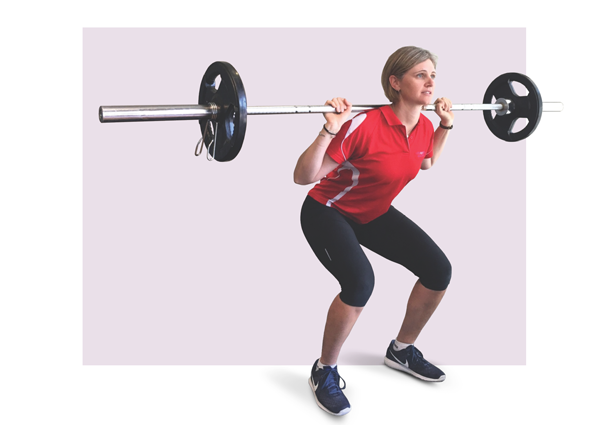Personal trainer and enthusiastic cyclist Tammy Curtis knows precisely how to power up your legs for maximum performance.
If you want to gain an advantage over the peloton, set some new PBs on Strava or pass your mates up a climb like they’re standing still, then listen up! There is one approach that I believe the recreational cycling community hasn’t caught onto yet. No, it doesn’t involve any illegal Lance Armstrong methods—it is simply weight training.
Just one dedicated leg weight sessions per week is a game-changer. If you want your legs feeling fresh over the weekend, I recommend a leg weight session to be completed early in the week to allow enough time for recovery. The session needs to be no longer than 45–50mins and you will need access to gym equipment. All facets of power, speed and endurance can be addressed using resistance of varying weight.
A combination of bilateral, unilateral, hip stability and core exercises need to be included in a well-balanced weights program. The exercises also need to be compound in nature which encourages several muscle groups to work together to produce the output making it specific to cycling. Progressions of the weight, sets, repetitions and exercises also need to be considered to keep the body challenged once adaptation occurs every 3–4 weeks.
When you break down the movement of a pedal rotation, the quadriceps, hamstrings, glutes and deep calves all work in unison to create energy to propel the bike forwards. So by placing these muscle groups under the heavier stress of weight training it will accustom them to a higher output. Squats, a bilateral exercise, are a perfect way to achieve this as it loads the whole body and engages the deep core. Practicing squats at a lighter load with higher repetitions will increase muscular endurance helping with long distance rides, whereas heavy loads with low repetitions will give more power and speed for climbing and sprint efforts.
The motion of a pedal stroke is opposite at any one time in the legs. Therefore, while the left leg is applying downward pressure onto the pedal the right leg is in the lifting phase. This has great application in single leg (unilateral) exercises in both pushing and pulling movements and will also even up any strength imbalances from left to right that may be prominent. Bulgarian squats, also known as split-squats, are ideal in replicating the pushing phase, while Swiss ball single-leg curls address the pulling movement.
Travelling higher up the body chain, the hips then need to stabilise so that the power can be transferred directly to the legs. This involves having a strong core to limit upper body movement, and strong hip stabilisers so that the pelvis stays horizontal with each pedal stroke. So to put the body under load with the need to stabilise through both hips and core, single leg deadlifts is one that hits the spot.
For the best program for your individual needs, see your doctor or a fitness professional.
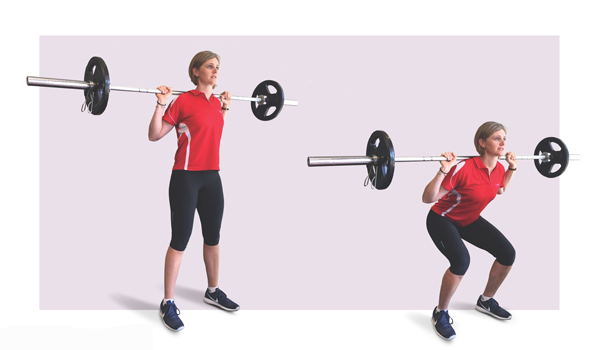 Squats
Squats
Place feet shoulder width apart with toes slightly flared
Keep chest up and upper back muscles engaged
Brace core to stabilise spine
Sit back through hips and lower to 90° at knees
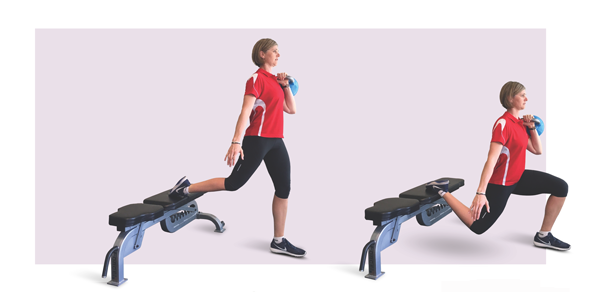 Bulgarian squats
Bulgarian squats
Place back foot flat on bench and step front foot out far enough to create a 90° bend at lowest point
Hold weight in rack position (front of shoulder) on same side as front leg
Maintain upright posture throughout and activate core
Lower body down until rear knee almost touches the ground, then drive upwards through the front foot
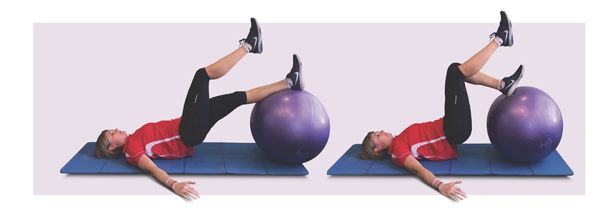 Single leg Swiss Ball curls
Single leg Swiss Ball curls
Centralise one leg in middle of ball
Elevate hips to align shoulders, hips, knee and ankle
Curl leg towards body maintaining hip position
Spread arms to help stabilise and brace core
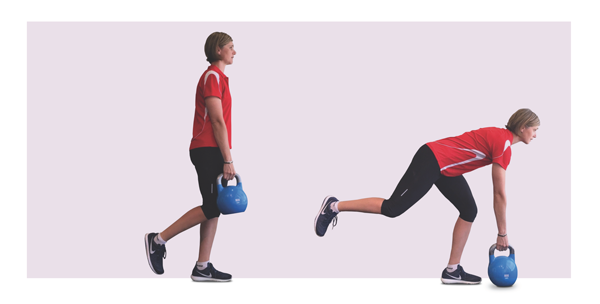 Single leg deadlifts
Single leg deadlifts
Balance tall on one leg with weight in opposite hand
Maintain a neutral spine when hinging hips forward
Lightly touch weight on ground before driving back up with balance leg
Observe horizontal hip alignment and engage core for control
Tammy Curtis is a personal trainer, educator and former athlete based in Ashburton, Melbourne. www.fitforall.net.au
Ride On content is editorially independent, but is supported financially by members of Bicycle Network. If you enjoy our articles and want to support the future publication of high-quality content, please consider helping out by becoming a member.

